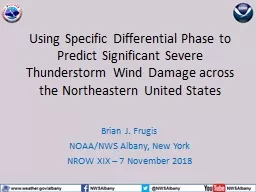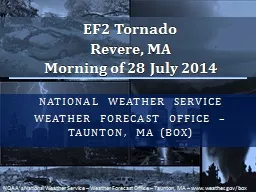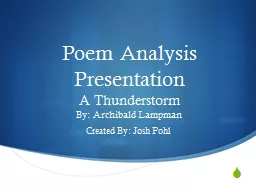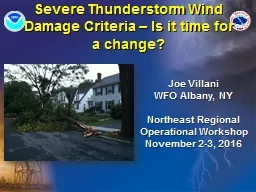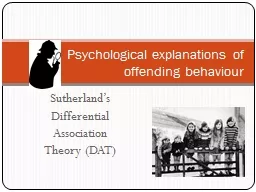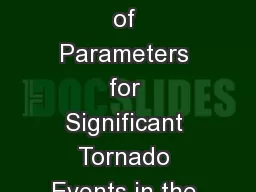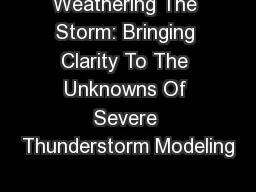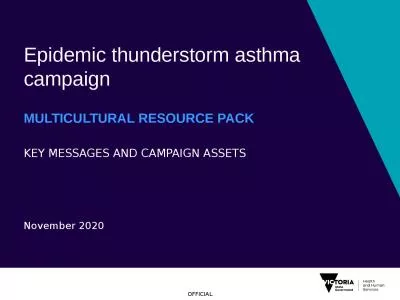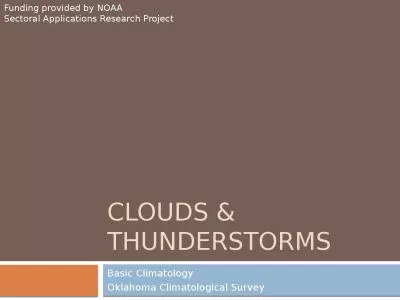PPT-Using Specific Differential Phase to Predict Significant Severe Thunderstorm Wind Damage
Author : yoshiko-marsland | Published Date : 2019-06-26
Brian J Frugis NOAANWS Albany New York NROW XIX 7 November 2018 Motivation Determining severe vs significant severe thunderstorms can be difficult for a warning
Presentation Embed Code
Download Presentation
Download Presentation The PPT/PDF document "Using Specific Differential Phase to Pre..." is the property of its rightful owner. Permission is granted to download and print the materials on this website for personal, non-commercial use only, and to display it on your personal computer provided you do not modify the materials and that you retain all copyright notices contained in the materials. By downloading content from our website, you accept the terms of this agreement.
Using Specific Differential Phase to Predict Significant Severe Thunderstorm Wind Damage: Transcript
Download Rules Of Document
"Using Specific Differential Phase to Predict Significant Severe Thunderstorm Wind Damage"The content belongs to its owner. You may download and print it for personal use, without modification, and keep all copyright notices. By downloading, you agree to these terms.
Related Documents

